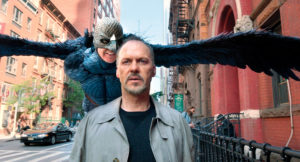A world in chaos. Terror attacks run rampant. Deportation is the hottest issue on a worried public consciousness as walls keep immigrants from interacting with native citizens.
A documentary? A nightly newscast? A Trump political ad?
Try Children of Men.
Ten years after it hit screens, wowed critics and cemented the reign of the “Three Amigos” over Hollywood, Alfonso Cuaron’s ominous tale of an infertile human race remains as prescient and topical now as it was a decade ago.
If anything, it has grown in stature, becoming a video cult favorite, spawning academic debate and influencing films today in what critics consider a new wave of cinema akin to the French films of the 1960’s and 70’s.
Not bad for a commercial flop.
From its stunning opening to a sprint of a finale, Children proved two hours of frenzy on film. Utilizing handheld cameras and seamless tracking shots, the picture would earn a raft of critic top-10s with its story of a government paper pusher (Clive Owen) who finds himself the charge of humanity’s last pregnant resident, Kee (Clare-Hope Ashitey).
The film would earn three Oscar nominations — best writing, editing and cinematography — on its way to 41 other movie awards and nominations. Roger Ebert compared it to Metropolis and Nosferatu. 
 The New York Times called its final battle sequence one of finest “ever seen on film.”
The New York Times called its final battle sequence one of finest “ever seen on film.”
Yet it never really took off at the box office. With ticket sales of about $35 million, the grim tale collected less than half its production budget. When it opened on Christmas weekend 2006, it did a paltry $180,000 in limited release — about the catering cost of a Michael Bay opus.
But like The Matrix and Blade Runner, the dystopian cautionary tale found an audience over the years. 
 tAnd like those films, Children has become a benchmark for science fiction — largely for its timeless nature. Word of mouth and steady video rentals would ultimately make the $75 million film a tidy profit for distributor Universal Pictures.
tAnd like those films, Children has become a benchmark for science fiction — largely for its timeless nature. Word of mouth and steady video rentals would ultimately make the $75 million film a tidy profit for distributor Universal Pictures.
And its audience continues to grow. Children has become a springboard for debate among academics such as Stanford senior fellow Francis Fukuyama, author The Origins of Political Order and The End of History. Fukuyama tours the nation with the film, using it as the fulcrum for geopolitical debate over a growing populace squabbling over a shrinking natural resource pool.
Indeed, there’s no escaping the topicality of Children. The movie’s Muslim-Christian tension resembles BBC footage. The story’s narrative kindling — the percolating firestorm over immigration — could have been come from the teleprompter of the Republican National Convention. The story’s immigration center is located in Bexhill, England. (Brexit, anyone?)
Technically, the film’s shaky, handheld camera — usually holding on long, extended takes — is the hottest flourish in Hollywood, thanks to editing technology that makes cuts a stylistic choice, not a filmmaking necessity.
Consider the brutal car ambush scene (spoiler alert), which takes place about a half hour into the movie. In addition to putting the film into overdrive (and killing a character in stunning fashion), the bloody chase/shootout lasts more than four minutes without a visible cut. (Orson Welles’ classic one in Touch of Evil lasted three, once considered an eternity.)
Since Children, directors have engaged in a contest of tracking shots, essentially seeing who can hold their breath the longest; Cuaron’s Gravity opens with a tracking shot that lasts an epic 17 minutes. Birdman, the 2014 film that captured Best Picture, plays as one entire tracking shot, without a single visible take.
Speaking of which: Those movies came courtesy of Cuaron and Alejandro Gonzalez Inarritu. two-thirds of Hollywood’s “Three Amigos” trinity. Along with third member Guillermo del Toro (Pan’s Labyrinth, Pacific Rim), the men have have hurtled the industry into a technically-savvy style not unlike the movies of the French New Wave movement. Last year, Inarritu became the first filmmaker to win back-to-back directing Oscars (Birdman, The Revenant). Consider it the Latin New Wave movement in cinema.
Both movies took their aesthetic cues from Cuaron’s bleak vision of the world 20 years in the future.
“It is above all the look of Children of Men that stirs apprehension in the heart,” mused Ebert. “Is this what we are all headed for?”
It may be the end of the world as we know it, but on the big screen at least, it all looks fine.



